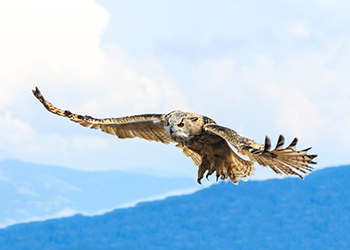How can we be Sustainable?
Do what nature does.
The Sustainability Imperative
Various human activities contribute to climate change and if not rethought and modified, will continue to undermine the ongoing health of earth and human systems. Business has a very important role to play in shaping how this goes forward.
More and more, financial markets, investors, and lenders want to see environmental impacts addressed. Other important stakeholders are looking at this too – current and potential customers and current and potential employees. Acting on this is something more than a box to check and the imperative of making sustainability part of an overall business strategy is not going to go away. Businesses risk becoming uncompetitive by not adapting to this reality. Choices are to lead or follow. Ignoring this is not an option for a business that wants to flourish.
Including sustainability in overall planning provides rich opportunities for new thinking and doing – especially when biomimicry is included into the plan. Biomimicry is innovation inspired by nature. Check out how a pelican, tree and wasp can inspire new ideas:
- Conserve energy, maximize lift, minimize drag like a pelican.
- Optimize strength, resilience, and materials for a variety of load conditions like a tree.
- Absorb solar energy and turn it into electricity like a wasp or hornet.

“Every social and global issue of our day is a business opportunity in disguise… just waiting for the pragmatism of good business, its capacity for radical innovation and entrepreneurship, and its management for results.”
— Peter Drucker
Sustainability Mindset = Thinking like a Natural System Operates
Biomimicry supports sustainable innovation and whatever innovation process your business uses, biomimicry is a fit. Whether you are looking to use less energy, rethink materials and waste, or find non-toxic applications in your processes, biomimicry will open the solution space. Afterall, nature provides 3.8 billion years of R&D and offers endless possibilities for solving challenges.
We can help you look at natural systems to inform new ideas. We have 10 years of experience working with organizations bringing innovative concepts to stubborn problems. So what challenges are you facing? Through our consulting contract work and customized workshops, we explore the answers with you that will drive toward sustainable solutions.
“Nature plays a harsh game of survivor, brutally winnowing out the weakest ideas from trillions of experiments. It’s the best-funded, longest-lasting lab in history.”
“The Big Pivot” Andrew Winston
Aviation has long looked to nature for innovation. The Wright brothers solved the puzzle of flight by observing birds and insects. Look at how the airplane wing on the right mimics the shape of the owl’s wing. And there are many more examples in aerospace and aviation but the opportunity for innovation goes well beyond these industries. There is no industry that cannot benefit from a look at biomimicry.
Check out the examples below to get a sense of the breadth of applications.


Aerospace Industry Moves Forward
Airbus requires suppliers to conduct their business in a manner that actively manages environmental risks across their operations, products, and supply chain. Suppliers are expected to establish an appropriate environment management system (e.g. ISO14001 or equivalent), including policies and procedures aimed at effectively managing environmental performance, including integrating environmental considerations into product design and/or service.
Lockheed Martin builds sustainable supplier capacity by partnering with their supply chain to reduce adverse environmental impacts and focus on environmental sustainability continues to improve energy efficiency, reduce natural resource usage, and reduce waste and encourages suppliers to mirror their own sustainability goals of reduction in energy use, carbon emissions and waste generation.
Boeing is inviting suppliers to join them on their journey to develop and share better practices for an ever-shrinking environmental footprint. They are applying more explicit environmental definition in setting contract requirements and provisions, and expanding use of environmental criteria in evaluating and selecting supplier partners.
GE Aerospace fully supports aviation industry efforts to decarbonize, which requires a holistic, global approach. Meeting the industry’s goal of net-zero CO2 emissions from flight by 2050 requires deploying revolutionary technologies to reduce emissions and to advocate for increased use and availability of alternative fuels, such as Sustainable Aviation Fuel (SAF) and hydrogen. GE Aerospace is committed to a more sustainable future by investing now in bold propulsion technologies to reduce carbon emissions for the future of flight and making our operations carbon neutral. GE Aerospace is committed to a more sustainable future by investing now in bold propulsion technologies to reduce carbon emissions for the future of flight and making their operations carbon neutral. Their aim is to be carbon neutral across our global operations by 2030.
Sustainability: The Market is Speaking
Peter Lacy, Accenture’s Chief Responsibility Officer and Global Sustainability Services lead notes that “It doesn’t matter if you don’t believe in climate change and the need for shaping sustainable operations, the markets do.” Indeed Ernst & Young, KPMG, McKinsey, PwC and Booz Allen are also actively promoting the sustainability mindset.
Invite Biological Strategies Into Your Search for Solutions
Biologic Strategies
Life has evolved a set of strategies that have sustained over 3.8 billion years. By learning from these deep design lessons, we can create innovative strategies and measure our work against these sustainable benchmarks.
Evolve to
Survive
Adapt to Changing Conditions
Be Locally Attuned & Responsive
Integrate Development with Growth
Be Resource
Efficient
Use Life-Friendly Chemistry
About Us
Great Lakes Biomimicry is a wholly owned subsidiary of the Ohio Aerospace Institute. We are a non-profit focused on accelerating innovation based on the solutions already tried and tested in nature. Since nature’s solutions are inherently sustainable, biomimicry can help meet Environmental, Social and Governance (ESG) goals as well as net-zero operations and overall sustainability goals.
CONTACT US
Thomas N. Tyrrell
Great Lakes Biomimicry c/o CollaboRx
6100 Oak Tree Boulevard
Suite 200
Independence, OH 44131
Great Lakes Biomimicry Board
Karen Allport
Marketing and Communications Executive
Fran Buchholzer
Community Leader
Tom Chema
President, The Gateway Group
Ali Dhinojwala, PhD
H.A. Morton Professor of Polymer Science, University of Akron
Kate Faust
Partner, Rockwood Equity Partners
Salvatore Miraglia
Salvatore Miraglia Jr. Consulting, LLC
John Nottingham
Co-President, Nottingham Spirk
Ven Ochaya, PhD
George Herzog Chair in Free Enterprises, Professor Business Administration, Baldwin Wallace University
Doug Piekarz
President and CEO, Akron Zoo
Emeritus Board Members
Rob Briggs
Don Knechtges
Tom Tyrrell, Founder and Chairman
